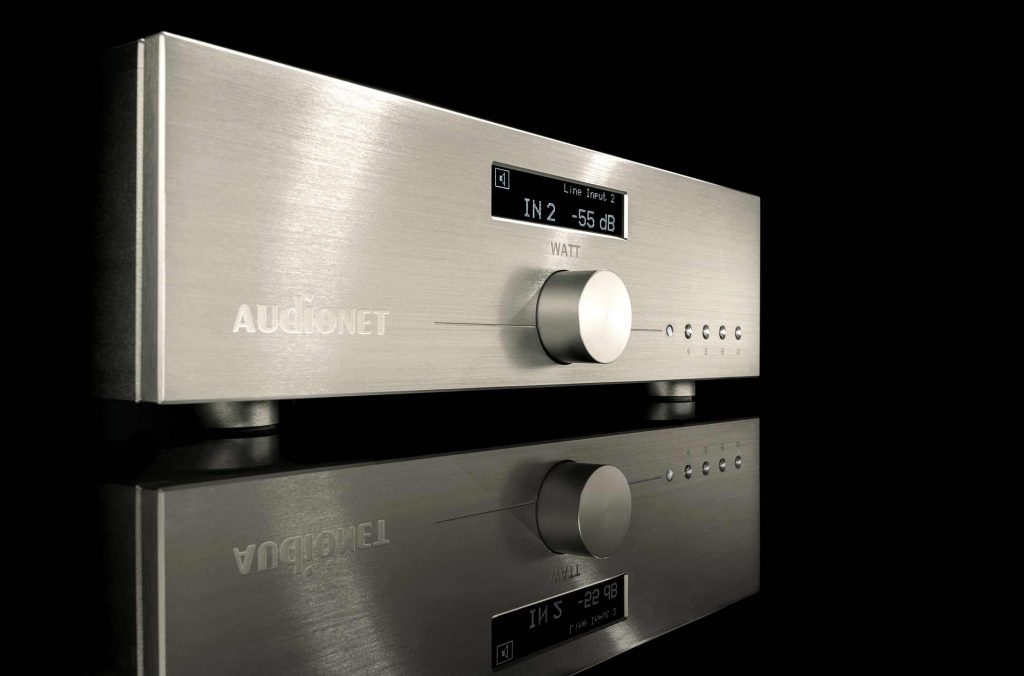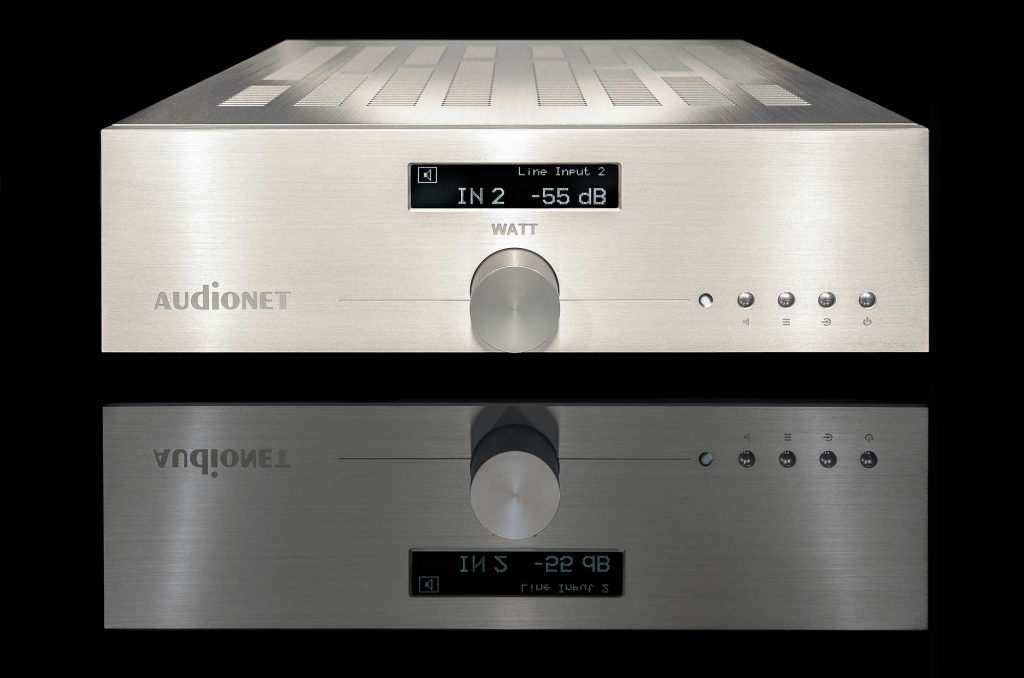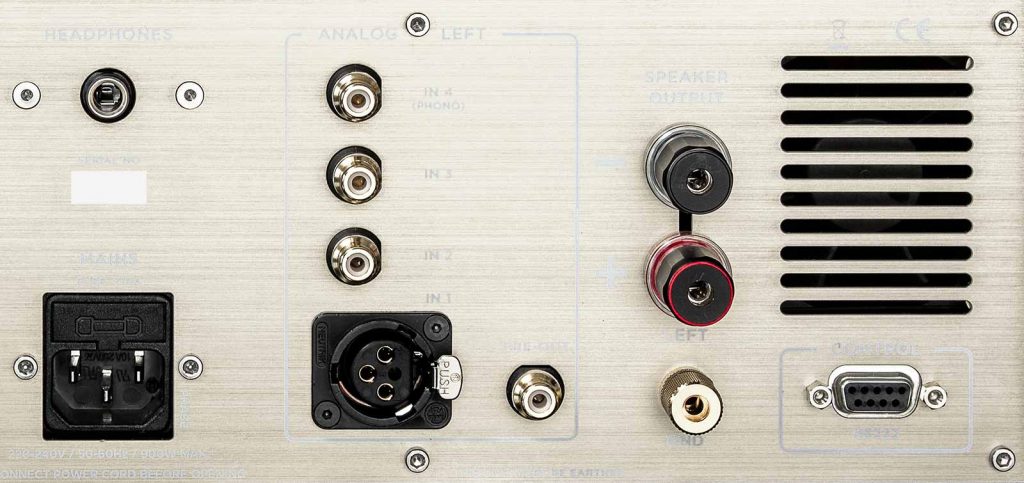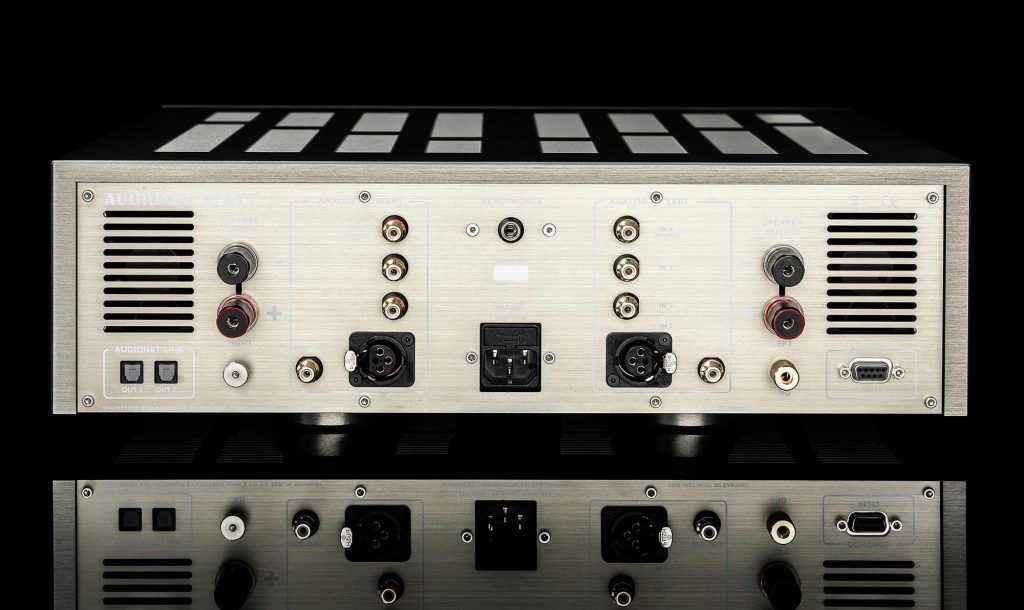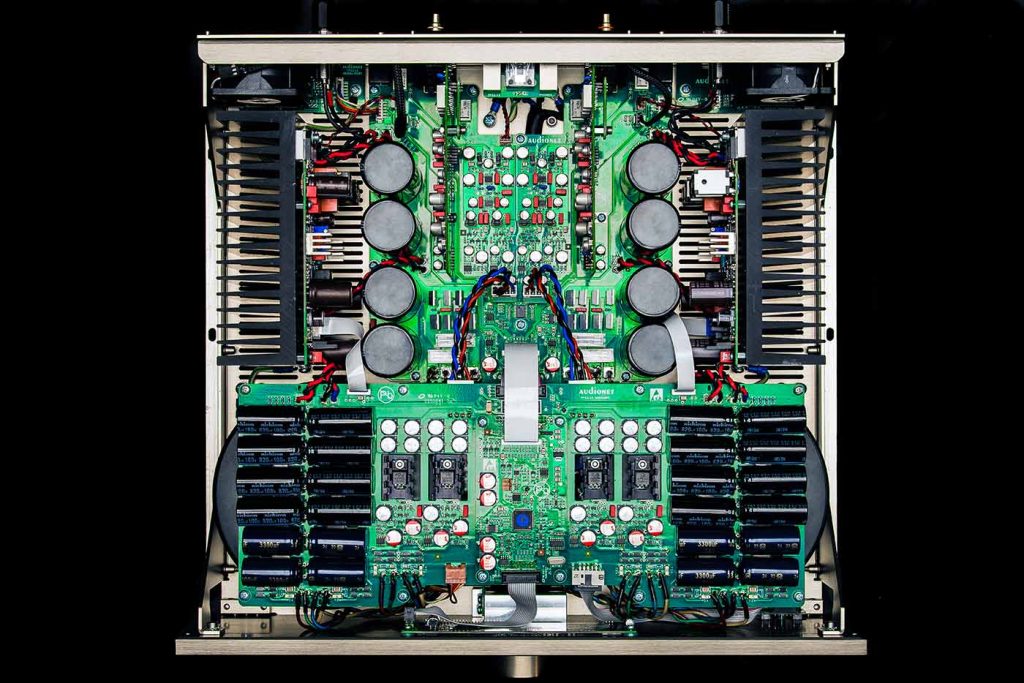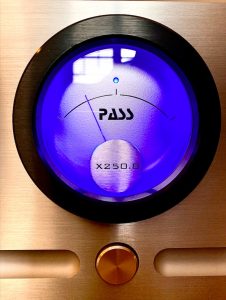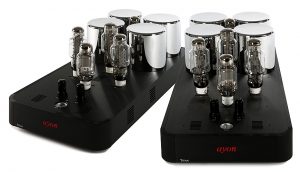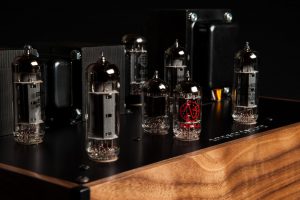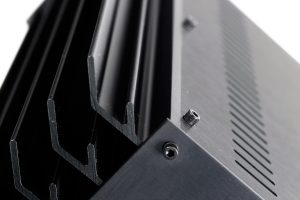Will Wonders Never Cease
A recurring nightmare haunts my dreams. In the nightmare, some guy named Bill Parish of GTT Audio continually harasses me with phone calls, texts, and emails imploring yours truly to return the Audionet WATT integrated amp that took up residence hear at Casa Jeffries a little over a month ago (and which I have absolutely fallen in love with).
You see, Bill wants to ship my amp to Bensenville, Illinois in time for the 2018 AXPONA audio show, and somehow thinks that the WATT belongs to him, not me. I tell him to sod off! He threatens me with a lawsuit, and of possibly resorting to extra-legal methods if necessary to reclaim his property. Some guy named Sergei features prominently in these conversations.
Things are about to get ugly, friend!
In all seriousness, Bill does own the amp, and kind soul that he is, agreed to loan it to me during the month preceding AXPONA 2018. And what a month it's been! For those readers who jump straight to that part of the review where the reviewer delivers his/her overall judgment of the product under consideration, let me simply say this: The WATT is the finest component to ever grace my listening room. Nothing else comes close to rivaling its peerless neutrality, its utter invisibility, and its unwavering musicality.
To my ears, it truly is an integrated amplifier for all seasons.
It should come as no surprise to regular readers of Positive Feedback, or any of a host of other print and online audio journals, that the creative minds at Germany's Audionet are on a roll—big time! The Teutonic upstarts first stunned U.S. listeners and reviewers with the domestic release of their remarkable PRE G2 linestage and MAX monoblock amplifiers several years ago (the firm has been making gear since the mid-1990s). Our own David Robinson gushed over the Audionet amp/preamp combo in our January/February 2015 issue (HERE), his words of praise followed by Marshall Nack's stellar send up of the Audionet MAX Monoblock amps in our March/April 2015 issue (HERE - Marshall ended up buying the review pair).
In my Issue 95 road trip entry (HERE), I offered a briefer assessment of the Audionet front-liners after an ear-opening weekend spent with PF's peripatetic scribe Greg Weaver, discovering for myself just what the PRE G2 linestage and MAX Monoblock amplifiers can accomplish in a top-flight system.
Like David and Marshall, not to mention Dr. Weaver, I praised the sheer naturalness, coherence, air, and speed of the Audionet electronics, but also marveled at their relatively reasonable cost, superb quality of construction, and stunning musicality.
To anyone who takes the time to listen, and I mean really listen, it was and is abundantly clear (certainly to me and the other reviewers I mentioned) that what we have here are solid state electronics that seamlessly amalgamate everything solid state devotees admire about that breed (the absence of tube hiss, marmoreal bass response, sky-high upper octave extension, superb neutrality, and transient speed), with many of the virtues we routinely associate with the best tubed gear (air, liquidity, tonal richness, superior musical flow, and that subtle halo of ambient warmth and naturalness that makes listening to the best of that breed so damn much fun).
The Audionet electronics argue with resounding authority that these sonic metrics are neither wholly exclusive to either type of amplifier, nor beyond successful amalgamation by skilled designers.
The release of the new Scientist Series electronics, of which the WATT integrated amp, the object of this preview/review, is part, promises to recalibrate the high end über amp pecking order even further. Our own Greg Weaver has repeatedly shared with me his utter inability to accurately capture in words the tectonic sonic advances that Audionet's new Stern linestage and Heisenberg Monoblock amps have delivered in his system.
In many ways, I find myself in the same boat when it comes to describing what I am hearing, and just as importantly, not hearing, with the WATT. But assess and judge I shall, at least to the best of my limited abilities.
Fifty-One Pounds of Sonic Kick-Ass
Yup! The WATT weighs a hefty 51 pounds and appears to be hewn from a solid block of aircraft-grade aluminum (or "aluminium" if you prefer). The only visible screws I could find are those that affix the rear panel to the amp's internal structural elements.
Build quality is exceptional and commensurate with the stiff tariff. The gorgeously sculpted and impressively thick face plate feels silky-smooth yet reassuringly beefy and substantial to the touch. Audionet has clearly designed the WATT with a keen eye toward reducing chassis and internal component vibrations.
A single large round knob on the front panel, this situated below an informative display window, controls volume settings. The display panel highlights the chosen volume level, the chosen source, and to name the latter if one desires. The only other controls, including the input selector and power up/standby switch, are soft-touch buttons that adorn the WATT's lower right-hand corner (when the listener faces the unit). A chunky aluminum remote adjusts volume, selects inputs, and moves the unit in and out of standby mode. Minimalist and sleek, it works like a charm.
Four source inputs offer sensible, but hardly state-of-the-art, connectivity options. Users can opt for an internal phono stage that will cannibalize input 4. Gain and cartridge loading options are accessed using the front control buttons. Input 1 accepts balanced connectors, with inputs 2 and 3 dedicated to single-ended sources. The review sample came with the optional phono module installed.
Speaker connectors utilize superior Furutech rhodium terminals. The speaker terminals are extremely well-built and spaced apart sufficiently widely to permit the use of fat cables with beefy terminations. The RCA inputs had some give to them, suggesting that they perhaps float sympathetically with the amp circuit boards to dissipate vibration-born flexing. Lastly, I highly recommend that you use a high-quality after-market power cord. I used PS Audio's wonderful PerfectWave AC 12 power cable to excellent effect, leaving the Audionet cable in the box.
Did I happen to mention that build quality was unequivocally first-rate? Please check out the Audionet website (HERE) for additional design details.
The Sound of Silence
More than any audio component in my immediate or distant experience, the WATT appears to have little to no intrinsic sound of its own. At first blush, the absence of any easily discernible sonic footprint proved a bit disarming. Why? The answer is simple. With most components, even some very expensive gear, one expects, and indeed hears quite easily, colorations and distortions of various sorts, however slight. A dash of added warmth and gentle bit of frequency contouring here; a touch of mid-bass leanness, or by way of contrast, purple ripeness over there; a slightly rolled-off top, or a top-end that comes across as ever so slightly explicit, forward, and "whitish". Take your pick!
Invariably some such coloration (or combination of colorations) will rear its sonic head (whether ugly or euphonically pleasant), making it, and more importantly the component, more "visible" sonically. Stated another way, whatever their aesthetic value, these genetic markers tend to catch our ears and allow us to surmise, sometimes quickly, sometimes not, the basic sonic signature of a given component.
Not so the WATT. Lacking any readily discernible sonic tail of its own, the WATT makes it damn difficult to sort out any distinct identifying markers. In this sense, the unit functions as a nearly perfect "what goes in comes out" signal amplifier. This absence of distortion-based colorations, and the sense of immediacy and clarity that accompanies this colorlessness, no doubt stems from Audionet's use of magnetically and capacitively optimized circuits and supporting devices, these coupled to extremely short signal paths.
The WATT certainly sounds as if designed around the chimerical "straight wire with gain" ideal. It takes a while to appreciate, but this lack of overt coloration means that one can focus entirely on the intrinsic sound of the recording, the speakers, the other components in one's system, and, of course, the listening room, but not the amp.
In this sense, the sound of the WATT is the sound of the listening room itself!
But, my goodness, what a sound this little number makes, or more accurately, allows your source components, cables, speakers and listening room to make. From the stillest, calmest, blackest of backgrounds, music erupts into the listening space with alarming immediacy and vividness. Classical works, from modern string quartets to symphonic blockbusters, pressurized my small listening room with commanding authority.
On something as steely, shrill, craggily, and atonally violent as Schoenberg's String Trio (Schoenberg: String Trio, Op. 45 [Naxos]), the WATT reproduces with remarkable fidelity the intimate immediacy and naturalness of this totally digital recording, with each instrument occupying its own pocket of ambient air. The result is some of the most realistic sound-staging and imaging I have heard, assuming, of course, that this information is embedded in the recording, and that your speakers (primarily the Von Schweikert UniField 2 Mk IIIs I reviewed in Issue 93 HERE) and listening room can reproduce music with this level of ambient resolution (mine can).
With large-scale works, the WATT retains its reference-caliber immediacy, but usefully adds massive doses of dynamic swagger, control, and dramatic scaling to the mix. On recordings demanding this heightened degree of power, impact, and gravitas, Bernstein's sensitive reading of Mahler's magisterial fourth, for example (Mahler: Symphony No. 4 in G Major [Sony/Columbia]), one has the real sense that you are sitting in a concert hall (or at least at the Manhattan Center recording studios where this performance was recorded).
In this respect, the WATT lives up to Audionet's well-deserved reputation for maximizing soundstage width, depth, and height perspectives, while simultaneously outlining individual instruments, instrumental sections, and voices with eerie precision, layering, and focus. It's almost as if the WATT is magically directing the speakers and the listening room to grow or diminish in size and scale to accommodate the demands of whatever recording is playing.
Tonal and timbral subtleties are equally well served. The little Audionet captures the delicate pizzicato of the strings, the starkly dissonant harmonies, and the relentless undercurrent of angst and dread that typifies the Schoenberg String Trio to near perfection. Timbral signatures stand in sharp contrast to one another, making it all too easy to distinguish the violin from the viola, for example. The amp also reproduces the full spectrum of tonal colors, meaning that instruments sound more like they do in the concert hall setting than one is perhaps used to hearing at home.
Overall, the WATT sounds remarkably real, and of a piece musically. Highs soar to infinity, but without the subtle streaks of fine grain one often hears with solid state gear. Upper frequency brightness has been banished to the ether. The midrange sounds palpably real, meaty, and tactile, but also quick, transparent, and completely neutral. Voices retain the naturalness and fullness they do in real life, while difficult-to-reproduce instruments like solo piano, acoustic bass, oboe, and bassoon bloom, bellow, squeak, howl, and grumble just as they do in the concert hall.
The WATT's shear palpability and tactility might lead some listeners to opine that Audionet somehow managed to sneak a pair of tiny valves into the amp's input stage when no one was looking. Indeed, there were moments when I thought I was listening to a modern tube super-amp (think recent vintage VAC, Audio Research, or VTL gear, not classic Conrad Johnson or recent Prima Luna gear), not a state-of-the-art all solid state integrated.
Alas, this baby has a heart of pure silicon (and a voice anything but).
The WATT blooms with the same airy effusiveness that I heard in Greg's palatial listening room a few months back (meaning it blooms with an almost tube-like grace, naturalness, and openness), along with the same smoothness of presentation and liquid flow I hear with the Audionet separates (and once again, great tubed gear). But, and this is a big but, the high-current WATT also delivers the kind of marmoreal bass authority, timbral precision down low, and overall low-end impact that few if any tube amps, even the high-powered variety, can ever hope to.
It goes without saying that the WATT runs as quietly as pharaoh's tomb and feels as cool to the touch as the proverbial cucumber.
Summary Judgments
Whether this is the amp for you depends on three main criteria. First, you need the scratch to play in this league. Tricked out with its optional phono stage, the WATT approaches the $20K price threshold, beaucoup cash for any component, not to mention a lowly integrated amp. Whether its build and sound-quality justify the steep tariff depends on what you want in a component of this type, and what sonic expectations you bring to the table.
I will say this unequivocally: when compared to the three-times more expensive Audionet separates I heard at Casa Weaver, I cannot say that those amps clobber the WATT outright. They simply don't. Yes, they play a bit louder, stage a bit wider, scale a bit higher, and bloom a bit more airily, but that's about it, friend. In all other respects, the little WATT nips annoyingly close at the heels of its costlier brethren.
Second, you need truly outstanding cables to make this baby sing. I used interconnects and speaker cables in the $3-4K range, not stratospherically expensive by any means, but hardly cheap. Lower cost cables sounded fine, but not as resolved, transparent, and refined as the pricier wires. If you want to maximize what this amp can do, please don't skimp on cabling.
Third, make sure your source components are up to the task of feeding an amp of this caliber. Through the WATT, lesser components, and lesser recordings for that matter, sound like what they are—sonic also rans. Again, it goes without saying that the WATT is extremely transparent to sources, recordings, and just about any other sonic metric you care to name. It reveals with startling resolve the sonic differences between, say, the tonally resplendent and spatially holographic Bakoon DAC-21 on the one hand, and the more muscular and slightly coarser, chunkier sounding Cambridge Azur 851 DAC on the other.
Phono stages also have nowhere to hide. The WATT lays bare the upbeat, peppermint-y vividness and sheer naturalness of Ron Sutherland's staggeringly good 20/20 phono preamp, while unearthing as skillfully as any Manhattan psychotherapist the ripe, rich textures, brooding sonorities, and subtle darkness of the Parasound JC 3+ phono preamp (especially when driven by the Zu Audio Zu/Denon DL-103 Mk. II phono cartridge).
After a little more than a month, the only sonic markers I could detect were (perhaps) a gentle kiss of sweetness up top, and (perhaps again) the tiniest slice of leanness in the mid-bass region. Of course, it's entirely possible that these qualities belong to other actors (the treble sweetness to the phono stage and cartridge; the mid-bass leanness—I don't really like that term because it isn't entirely accurate, but I am at a complete loss to find any other descriptor that works—to the Cambridge DAC).
Of this I am certain: whether one can lay these very discreet markers at the feet of the WATT or other components in the system, the amp has the sheer resolving power to allow keen listeners to sort these issues out over time.
On balance, I can't imagine any sensitive listener not falling madly in love with this highly entertaining, shockingly revealing Bavarian middleweight. The WATT swings with the authority of a heavyweight bruiser, dances with the precision and control of a prima ballerina, and blooms with the electrifying vividness of the best valve amps.
Whether you can afford to take the little Audionet home is something you, your significant other, and your banker will have to decide. But, if you have the scratch, own musically revealing source components, cables, and speakers (or plan on buying same), and have been consigned to life in a small or medium-sized listening room, give the WATT a spin.
You won't regret the ride!
If I could afford the cost of entry, I'd buy this baby in a heartbeat.
Audionet WATT Integrated Amplifier
Retail: $18,800 (add $1000 for optional phono module)
Audionet
U.S. Distributor
GTT Audio
356 Naughright Rd.
Long Valley, NJ, 07853
USA
908.850.3092
All images courtesy of Audionet




